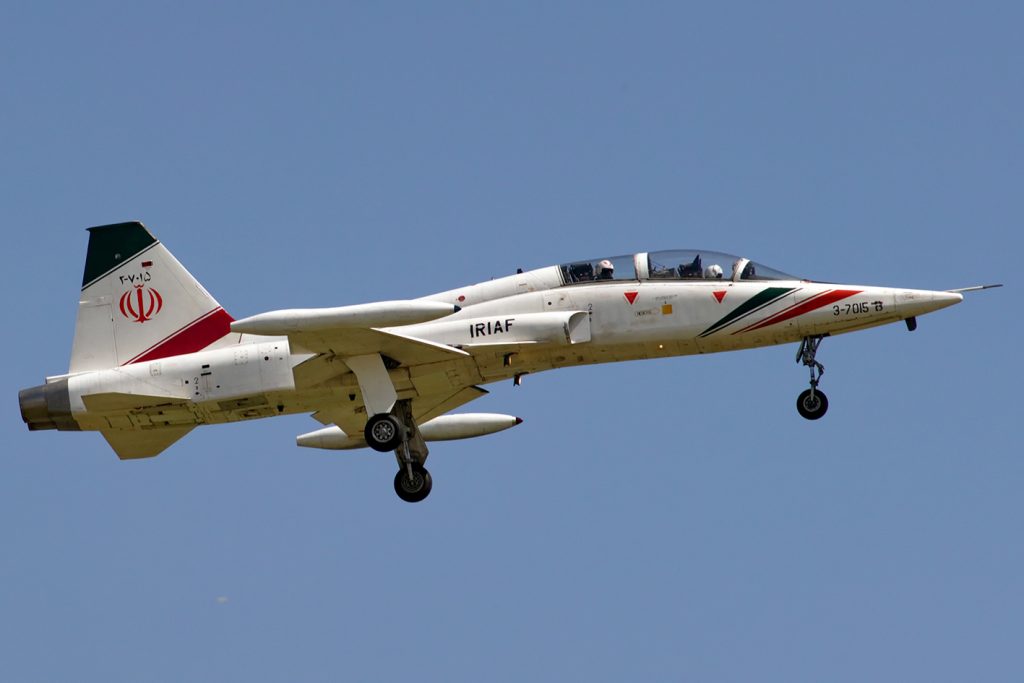Conversion of single seater freedom fighters to Simorh was an initial attempt of IAMI/ HESA to not only gain know-how of manufacturing and assembling a fully domestic fighter or advanced jet trainers, rather too quickly but temporarily meet the IRIAF’s needs to advanced jet trainers until completion of the Owj’s advanced jet trainer project “Ya-Hossein” which was started in April 1989.
This is the first F-5B Simorgh which was created from a badly damaged RF-5A reconnaissance and become the
very first advanced jet trainer was manufactured via recycling another aeroplane in Iran in 1980’s.
Thanks to engineers from South African Atlas Aviation and also Iranian aerospace engineers like Yaghub Entesari, the prototype of the first advanced jet trainer of IRIAF’s Owj complex named Dorna was manufactured and flew for the first time by war hero and F-5 test pilot Col. Sadegh-Poor on 1st April 1991.
From April 1994, because of the design flaws of the Dorna, a series of aerodynamic improvements and changes were applied to the design, and a new aeroplane was born which was named Tondar with 778-1 serial number. Tondar was completed in November 1997 and flew for the first time on 17th February 1998. But still, due to the design flaws which had been resulted due to unavailability of standard wind tunnels in Iran, the test pilots reported vibration on the aeroplane’s wings in cruise speed. Unlike Dorna, the Tondar was equipped with a single General Electric J85-GE-13, PC-7 avionic and also Martin Baker Mk.15 Ejection Seats borrowed from a PC-7C.
The Tondar’s aerodynamic design was improved and a new aeroplane named Tazarv was born. The work on re-design of Tondar into Tazarv was started in April 1998, and ended in 2001, when the aeroplane with 778-2 serial number logged its first flight on 22nd January 2001. The Tazarv was completely designed by Iranian engineers including Yaghub (Jakub) Entesari, and it became the final and best prototype of the Ya-Hossein project to be mass produced. But before that, another Tazarv prototype with slightly different aerodynamic improvements in empennage and exhaust nozzle was manufactured between April 2003 and 2005. It was named Tazarv-2 with 778-3 serial number and had four hard points under its wings for carriage of small rocket launchers or gun pods.
IRIAF had plans to mass-produce the airplane in Owj complex to have a fleet of at-least twelve Tazarvs for advanced pilot training until 2010, but due to the sanctions and also budget shortage, acquisition of the parts from instruments, hydraulic pumps to Mk.15 ejection seats and J85 Turbojet engines caused constant delays in the launch of the Tazarv mass production. The Tzarv-2 was actually planned to be the first mass produced example but was still in use for tests and evaluations until September 2007 when it was grounded forever.

